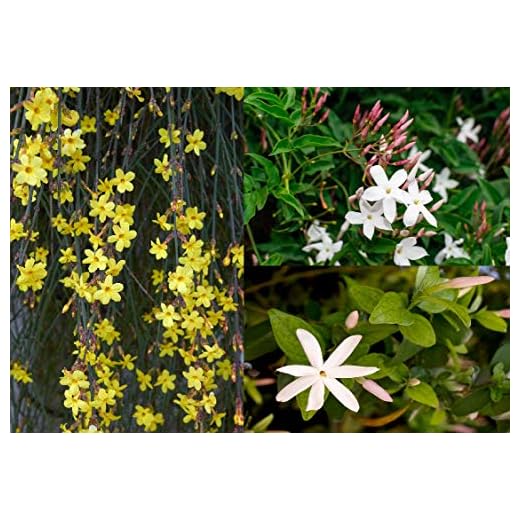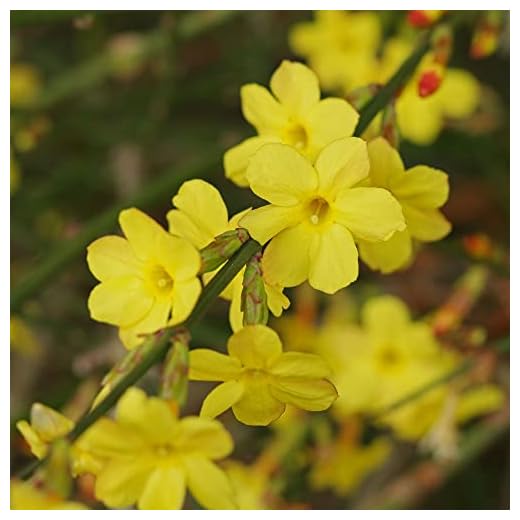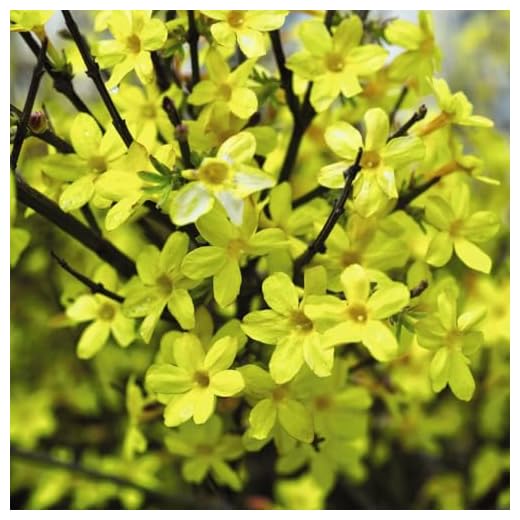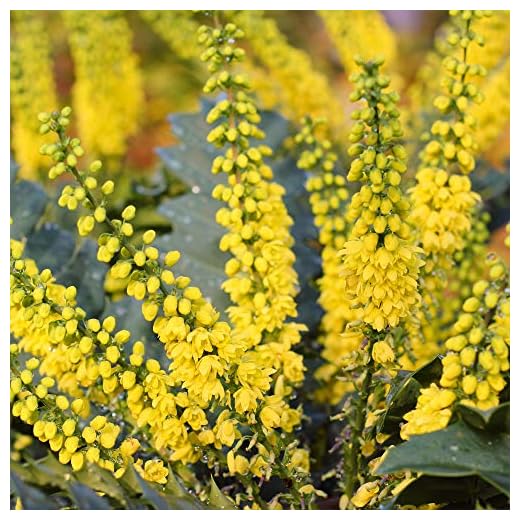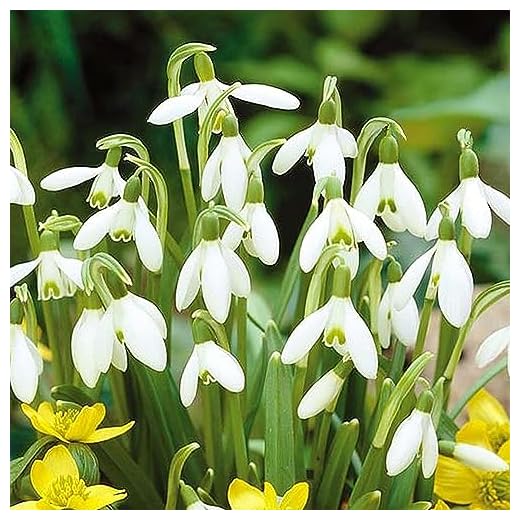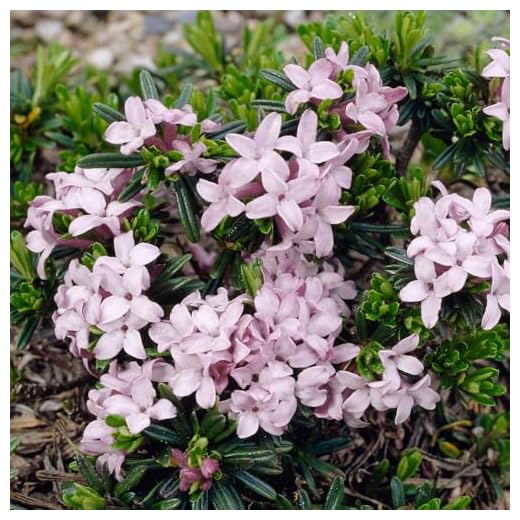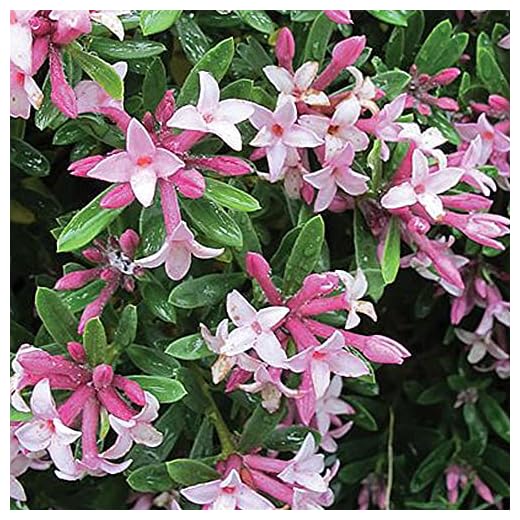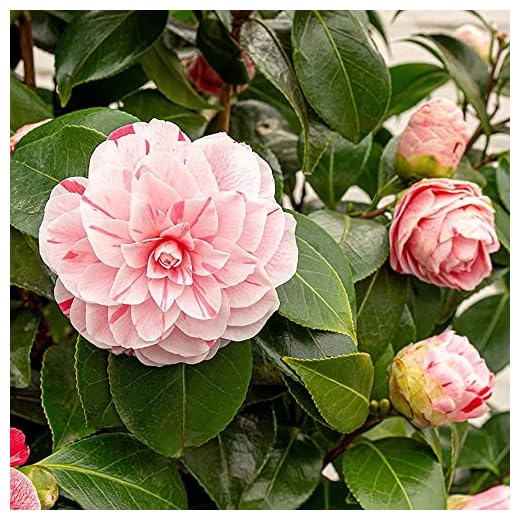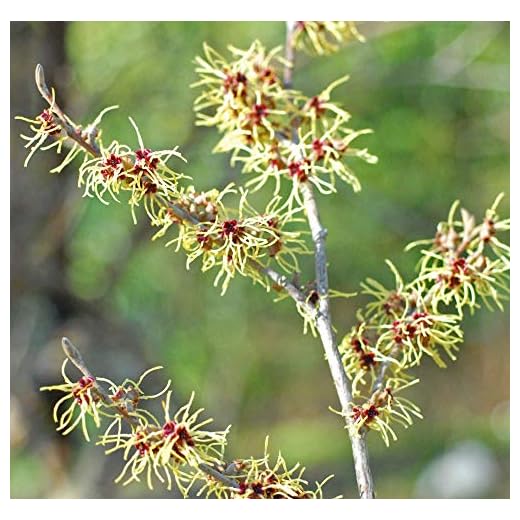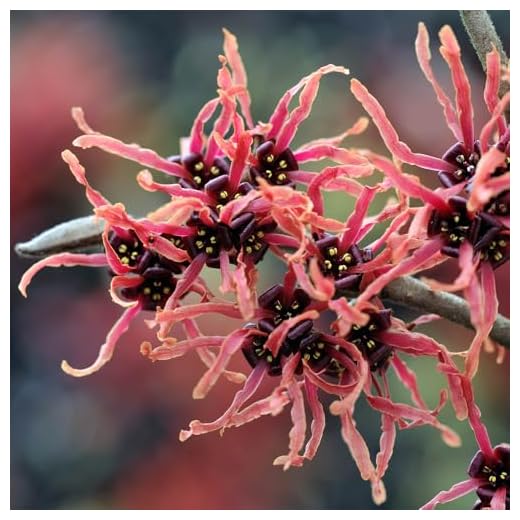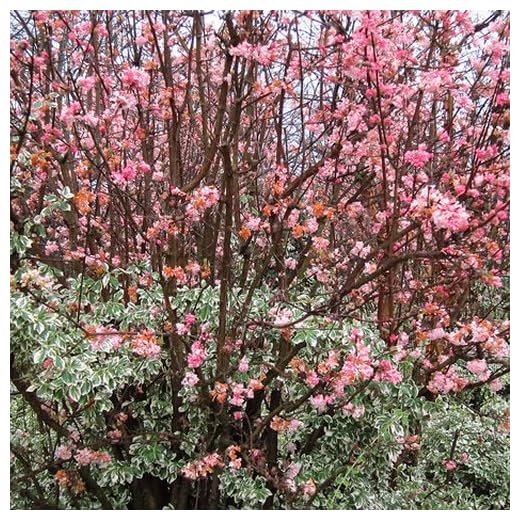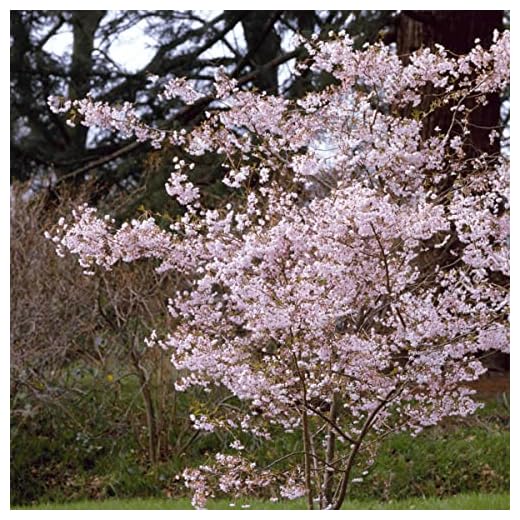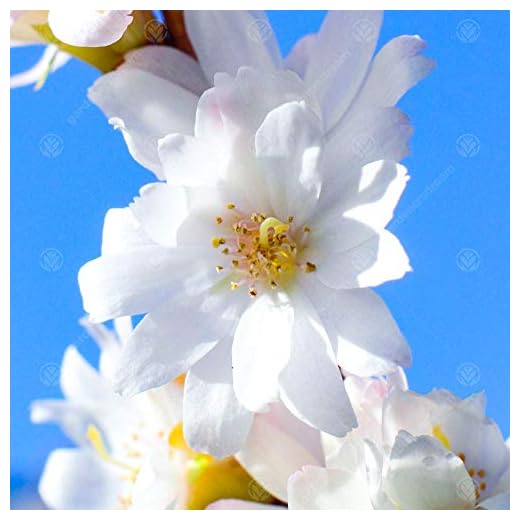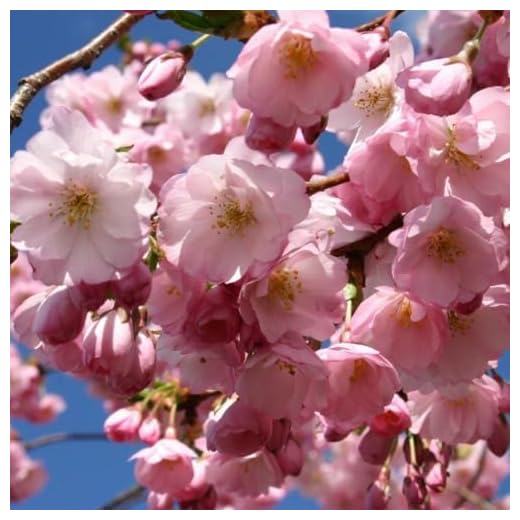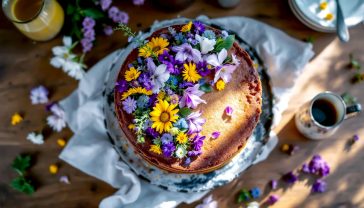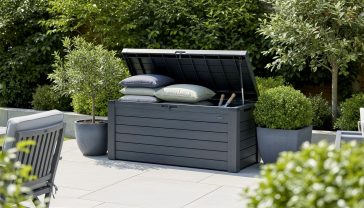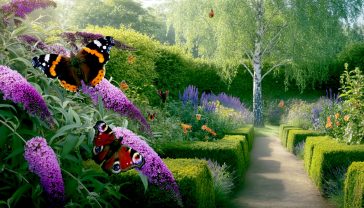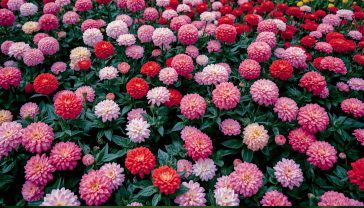The Great British Winter Garden: 10 Essential Flowering Plants and Trees to Banish the Bleak
Transform your bleak winter garden into a vibrant haven. Our definitive guide reveals 10 essential flowering plants and trees perfect for the UK climate.
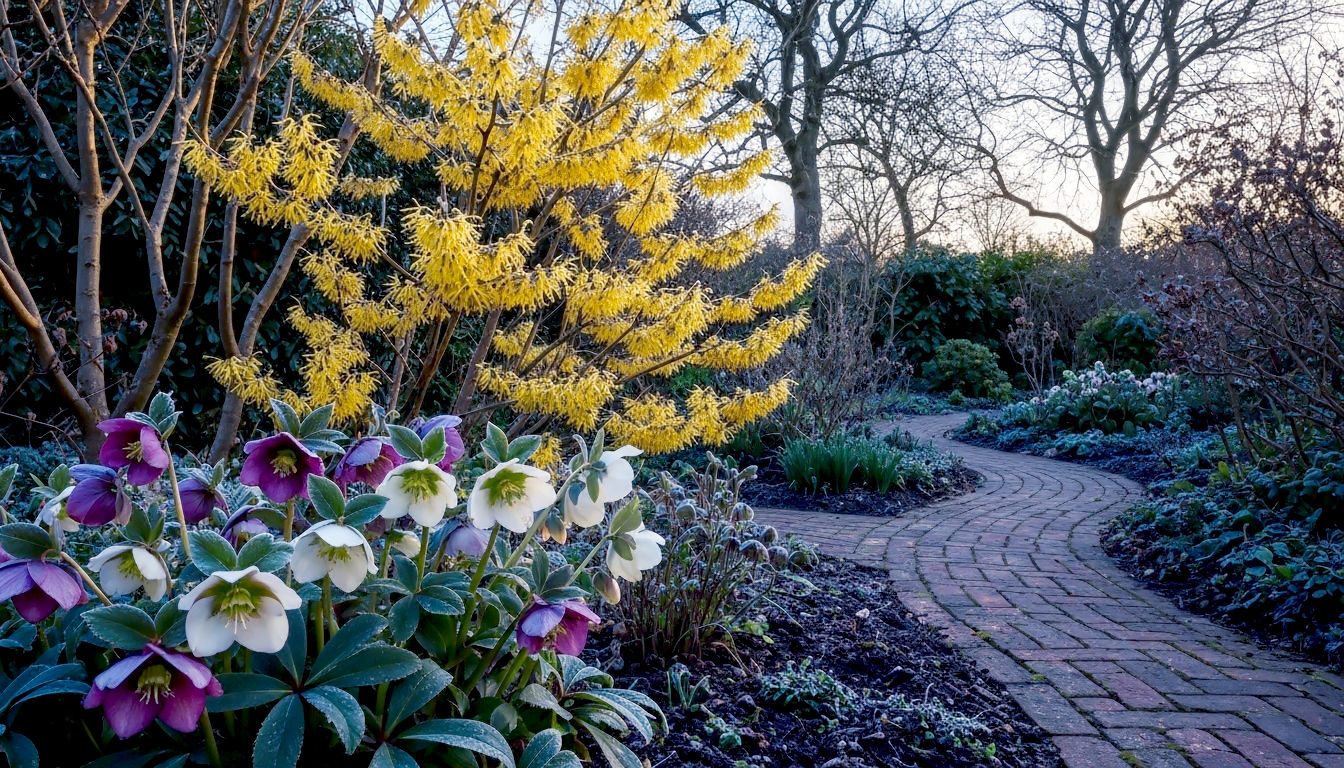
This post may contain affiliate links. If you make a purchase through these links, we may earn a commission at no additional cost to you.
Picture a typical British winter day. A steel-grey sky presses down, the air has a damp chill, and the garden looks… well, a bit sad. Bare branches, muddy patches, and a general sense of hibernation. It’s easy to think that we have to wait until the daffodils pop up in March to feel any joy from our outdoor spaces. But what if that wasn’t true? What if your garden could be a source of wonder, colour, and even perfume right through the darkest months?
Welcome to the world of the winter garden. It’s a place of quiet magic, where tough, resilient plants defy the gloom with startling bursts of colour and scent. A thriving winter garden isn’t just a nice idea; it’s a powerful tonic for the soul, a lifeline for brave wildlife, and a testament to the enduring spirit of nature. It’s about transforming your garden from a space you shut the curtains on to a scene you can’t stop looking at.
This isn’t about fighting winter. It’s about embracing its unique beauty. It’s about finding joy in a single, perfectly formed snowdrop, catching the heady scent of daphne on a frosty morning, or watching a brave bumblebee visit the sunshine-yellow flowers of a mahonia. In this guide, we’ll introduce you to ten winter superstars—the essential flowering plants and trees that will turn your patch, big or small, into a year-round haven.
Before You Dig In: Planning Your Winter Wonderland
As any seasoned British gardener will tell you, the secret to a happy garden is simple: right plant, right place. This is even more crucial in winter, when plants face tougher conditions and every bit of sunlight is precious. Before you rush to the garden centre, let’s quickly cover the basics to make sure your winter heroes thrive.
Know Your Aspect: Sun, Shade, and Winter Light
The sun takes a low, lazy path across the sky in winter. Areas that are sunny in summer might be cast in deep shade by a house or a neighbour’s tree from November to February. Spend a day watching where the light falls in your garden. Many winter-flowering plants are woodlanders, happy in dappled shade, but some, like Winter Jasmine, will give you their best show in a brighter spot. A south-facing wall is prime real estate, soaking up any available warmth and sunshine.
Understanding Your Soil: From Clay to Sand
British gardens are blessed (and sometimes cursed) with a huge range of soil types.
- Clay Soil: It’s heavy and can get waterlogged in winter, but it’s rich in nutrients. If you have clay, improve the drainage by digging in lots of organic matter like compost or well-rotted manure. This will stop plant roots from sitting in icy water.
- Sandy Soil: It drains brilliantly but can be low on nutrients. Again, adding organic matter is the answer. It acts like a sponge, holding onto moisture and food for your plants.
- Loam: This is the dream ticket—a perfect balance of clay, sand, and silt. Most plants will be very happy here.
- Chalky Soil: This is alkaline, and some plants, like Camellias, absolutely hate it. They need acidic soil. If you have chalky soil, it’s far easier to grow plants that like it or to grow acid-lovers in pots with special ericaceous compost.
You can buy a simple soil testing kit from any garden centre if you’re not sure what you’re working with.
The Frost Pocket Problem: Avoiding Cold Traps
Cold air is heavier than warm air. On a still, clear night, it sinks and flows downhill, settling in the lowest parts of a garden. These spots are called frost pockets, and they can be much colder than areas just a few metres away, damaging delicate flowers. If you live in a valley or have a dip in your garden, avoid planting your most prized winter-flowering treasures there. Give them a slightly elevated spot or a sheltered position near the house.
A Word on Hardiness: What it Means in the UK
Plant labels often have a hardiness rating. In the UK, this usually refers to the RHS (Royal Horticultural Society) scale. A plant rated H5, for example, is hardy in most of the UK, even during a severe winter. H4 is hardy in an average winter. Most of the plants on our list are very tough (H5 or more), but it’s always good to check, especially if you live in a colder part of the country like the Scottish Highlands.
The Winter Stars: 10 Plants to Transform Your Garden
Now for the main event. These ten plants are reliable, beautiful, and perfectly suited to the UK climate. They offer a fantastic range of colours, scents, and shapes to bring your garden to life when you need it most.
1. Winter Jasmine (Jasminum nudiflorum): A Cascade of Sunshine
If you need a reliable blast of colour to cut through the winter grey, look no further. Winter Jasmine isn’t actually a true jasmine and its flowers have no scent, but we can forgive it for that. From as early as November, its bare, arching green stems are smothered in cheerful, star-shaped yellow flowers that look like captured sunshine.
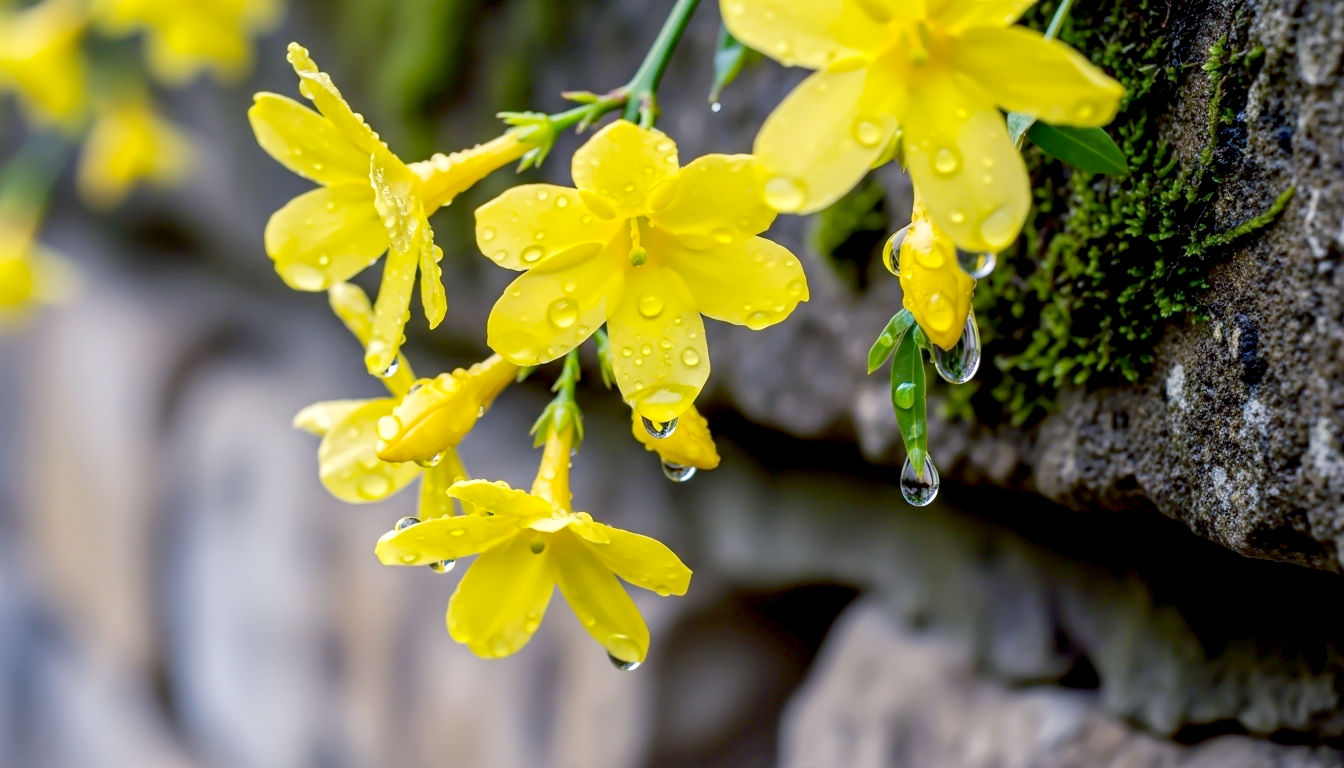
- Why it’s a winter hero: It’s incredibly tough, unfussy, and provides a long-lasting display of bright colour when little else is happening. The flowers are frost-resistant and will keep coming for months.
- Appearance: A scrambling shrub rather than a climber, it doesn’t cling by itself. It produces long, whip-like green stems that can be tied into a trellis or wall, or left to cascade down a bank or over a wall. The flowers appear on these bare stems before the leaves emerge in spring.
- Growing Guide:
- Position: Full sun will give you the most flowers, but it will grow happily in partial shade.
- Soil: It’s not fussy at all and will grow in almost any soil as long as it isn’t permanently waterlogged.
- Planting & Care: Plant any time from autumn to spring. Once it’s finished flowering in spring, give it a good prune. Cut back the stems that have flowered to a strong side-shoot. This encourages new growth, which is where next winter’s flowers will appear. It’s a vigorous plant, so don’t be afraid to give it a hard haircut to keep it in check.
- Best for: Training against a dreary wall or fence, spilling over a retaining wall, or brightening up a north-facing boundary.
Buy Winter Jasmine Online
2. Mahonia (Mahonia x media ‘Charity’): Architectural Scent
Mahonia is a plant that makes a statement. It has dramatic, spiky, holly-like leaves that look good all year round, providing fantastic structure. But in late autumn and winter, it does something extraordinary. It sends up long, elegant sprays of tiny, bright yellow flowers that smell unmistakably of lily-of-the-valley.
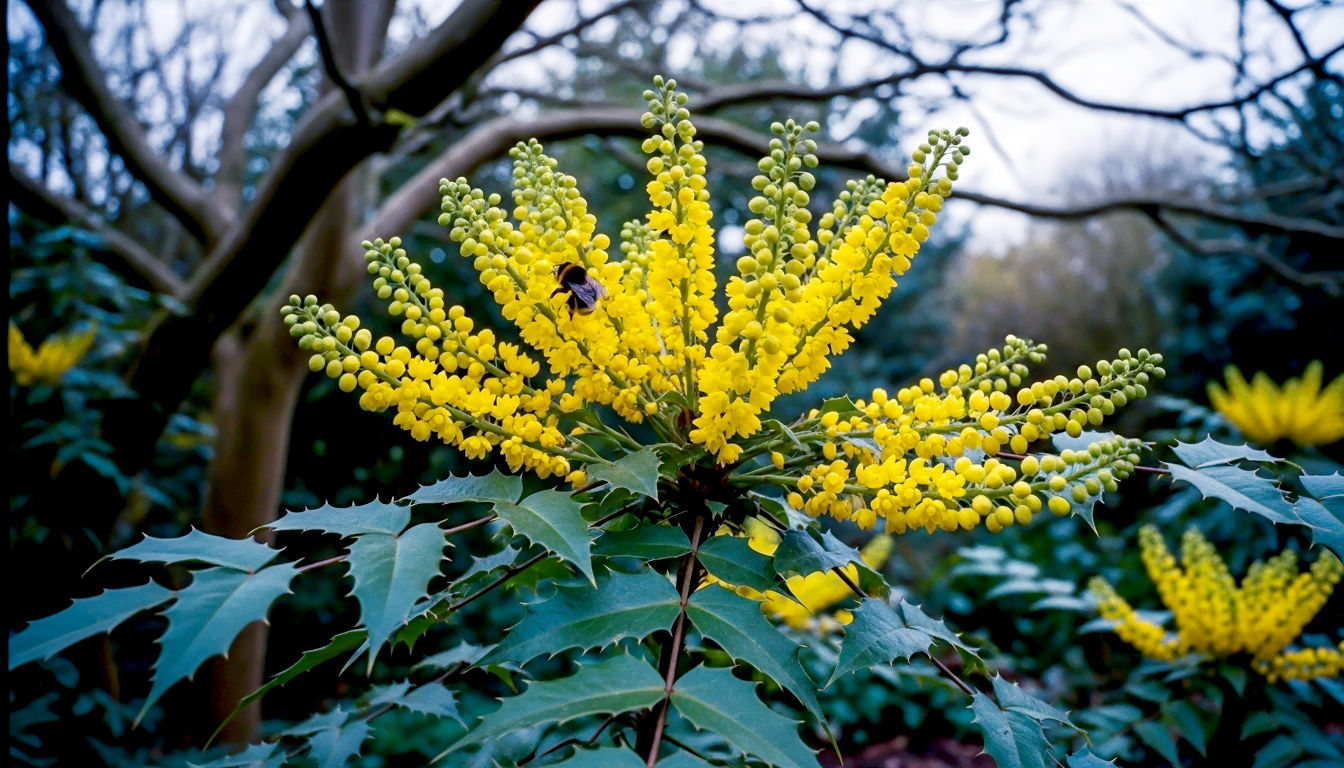
- Why it’s a winter hero: It offers structure, colour, and a powerful, sweet scent. It’s also a vital source of nectar for any bees that emerge on a mild winter day. After the flowers, it produces purple-black berries that birds love.
- Appearance: An upright, evergreen shrub that can get quite large (up to 4 metres). The flowers are held in long racemes (like floral spikes) at the very top of the plant, making a real focal point.
- Growing Guide:
- Position: It’s a woodland plant at heart, so it’s happiest in partial or even full shade. It’s perfect for a tricky, shady corner. Too much sun can scorch its leaves.
- Soil: It prefers moist, well-drained soil and, like most plants, will thank you for adding some compost when planting.
- Planting & Care: Plant in autumn or spring. It doesn’t need much pruning. Just remove any dead or damaged stems after flowering. If it gets too leggy, you can cut one or two of the oldest stems right back to the base to encourage new shoots.
- Best for: A shady spot at the back of a border, as a structural centrepiece, or as part of a woodland-style garden.
Buy Mahonia x media ‘Charity’ Online
3. Hellebore (Helleborus niger & H. x hybridus): The Christmas & Lenten Rose
Hellebores are the undisputed queens of the winter garden. With their beautiful, bowl-shaped flowers that nod gracefully downwards, they bring an elegance that is hard to beat. They come in a breathtaking range of colours, from the purest white of Helleborus niger (the Christmas Rose) to the dusky pinks, deep purples, and even near-blacks of the Helleborus x hybridus group (Lenten Roses).
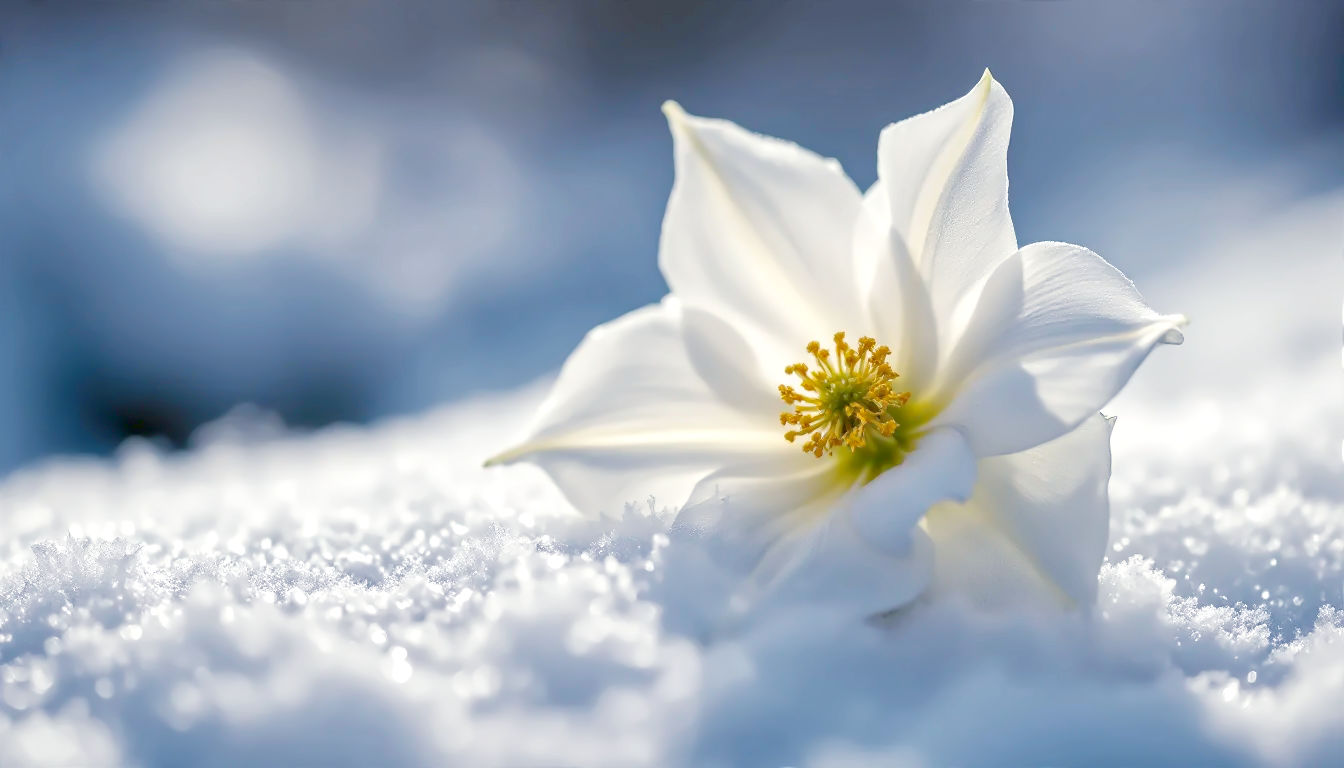
- Why it’s a winter hero: They flower for an incredibly long time, often from December right through to April. They are tough, shade-loving, and come in so many colours you can build a whole collection.
- Appearance: Leathery, deep green, evergreen leaves form a handsome clump. The flowers, which can be single or ruffled doubles, hang their heads to protect their pollen from the rain.
- Growing Guide:
- Position: They thrive in the dappled shade found under deciduous trees and shrubs. They don’t like being blasted by winter winds or scorching summer sun.
- Soil: They love rich, moisture-retentive but well-drained soil. They prefer neutral to alkaline conditions, so they’re a great choice for chalky gardens. Dig in plenty of well-rotted leaf mould or compost before planting.
- Planting & Care: Plant them in autumn or spring. To really appreciate the flowers, plant them on a slope, in a raised bed, or in a tall pot. In late autumn, it’s a good idea to snip off all of the old leaves. This does two things: it makes the emerging flowers much easier to see, and it helps prevent the spread of a fungal disease called Hellebore leaf spot.
- Best for: Woodland gardens, shady borders, planting under trees, and creating beautiful winter containers.
But Winter Hellebores Online
4. Snowdrop (Galanthus nivalis): The Harbinger of Spring
Is there any plant that lifts the spirits quite like a snowdrop? Seeing their delicate white heads push through the frozen ground is a sure sign that spring is on its way. They are a symbol of hope and resilience, and a British winter garden simply wouldn’t be complete without them.
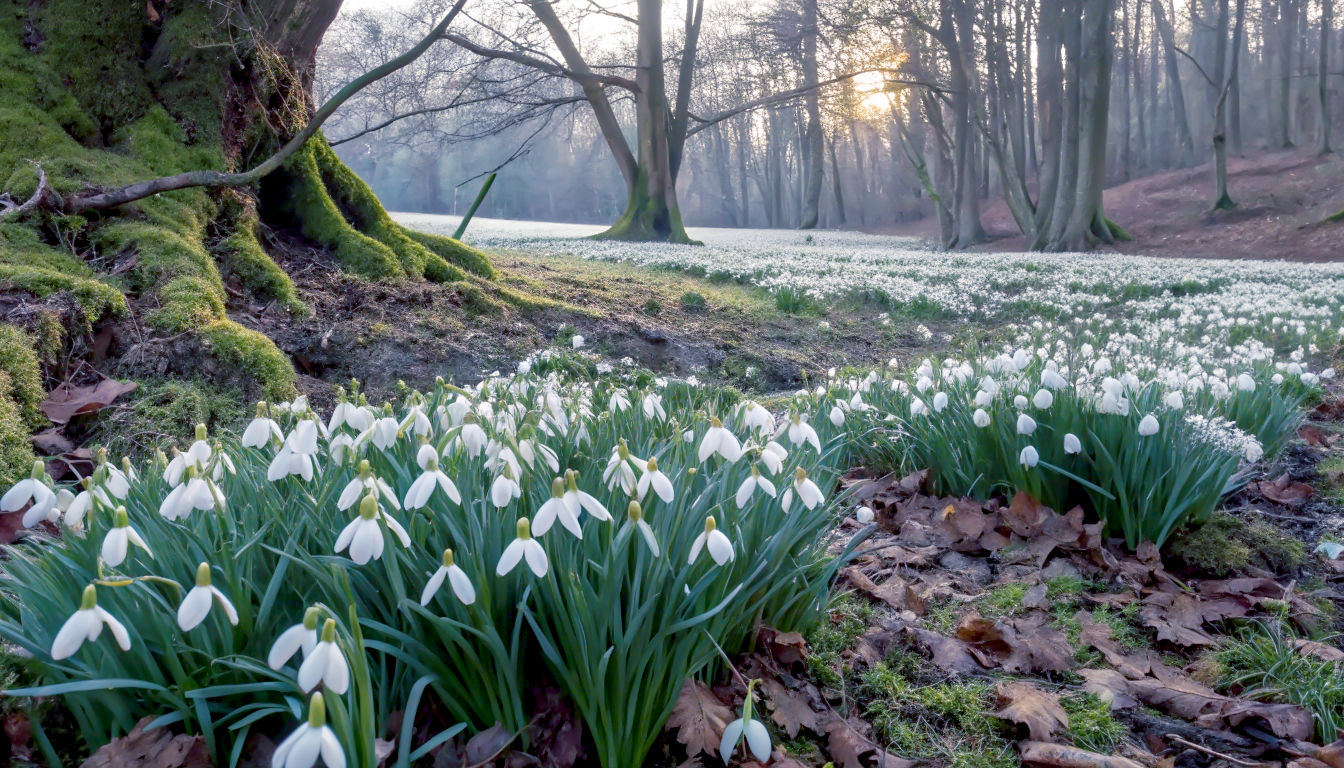
- Why it’s a winter hero: They are one of the very first flowers to appear, often in January, and can create stunning white carpets. They are tough as old boots despite their delicate appearance.
- Appearance: Each bulb produces narrow, grey-green leaves and a single, small, drooping bell-shaped white flower. The three outer petals are pure white, while the three inner ones have a little green notch.
- Growing Guide:
- Position: Happy in light shade, especially under deciduous trees where they will get sun in winter/spring and shade in summer.
- Soil: They need moist but well-drained soil that is rich in humus. They hate to dry out in summer.
- Planting & Care: This is important: don’t plant dry snowdrop bulbs. They rarely grow. The best way to establish them is to buy them ‘in the green’ in late spring, just after they’ve finished flowering but while they still have their leaves. Plant them straight away and they will establish brilliantly. Once you have a clump, you can dig it up, divide it, and replant to spread them around your garden.
- Best for: Naturalising in lawns, creating drifts under trees, and filling small gaps at the front of shady borders.
5. Winter Aconite (Eranthis hyemalis): A Carpet of Gold
If snowdrops are the symbol of hope, winter aconites are a shout of pure joy. They produce brilliant, buttercup-yellow flowers, each surrounded by a frilly green ruff, that hug the ground. On a sunny winter day, a carpet of them is an absolutely breathtaking sight.
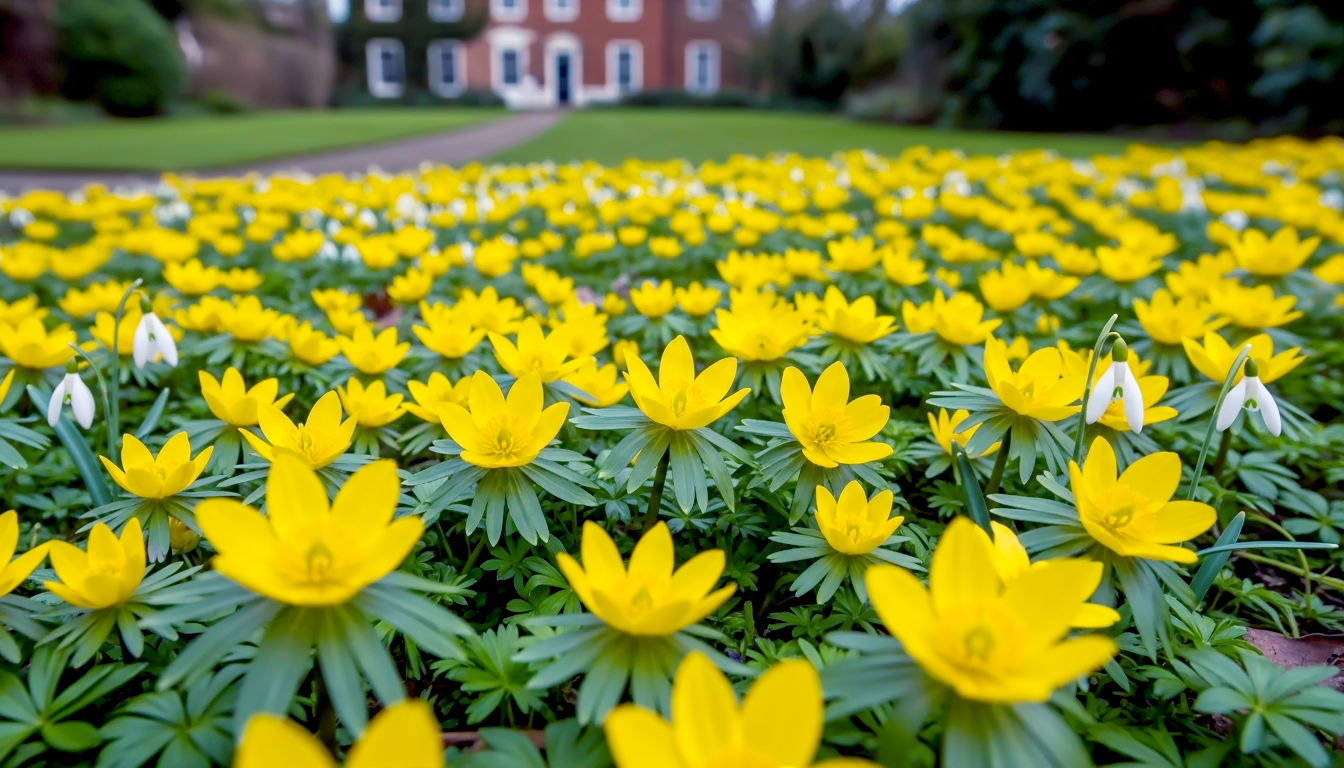
- Why it’s a winter hero: They provide a low-growing carpet of intense, vibrant colour from January to March, often flowering at the same time as snowdrops for a classic winter combination.
- Appearance: Each flower sits on a short stem just above a leafy bract. They open wide in the sun and close up at night or in dull weather.
- Growing Guide:
- Position: Just like snowdrops, they are perfect for growing under deciduous trees and shrubs.
- Soil: They love moist, humus-rich soil and prefer alkaline conditions.
- Planting & Care: The dry corms (which look like little black bits of gravel) can be tricky to get going. The key is to soak them in a bowl of water for 24 hours before planting them in the autumn. This rehydrates them and gives them a much better chance of success. Like snowdrops, they will happily self-seed and spread once they are established.
- Best for: Creating a golden carpet under trees, mixing with snowdrops, and naturalising in wilder parts of the garden.
Buy Aconites Online
6. Daphne (Daphne bholua ‘Jacqueline Postill’): The Ultimate Winter Perfume
If you could only have one plant for winter scent, it would have to be this daphne. The perfume is simply incredible—a sweet, powerful fragrance that can stop you in your tracks from metres away. It’s worth growing for the scent alone, but the flowers are beautiful too.
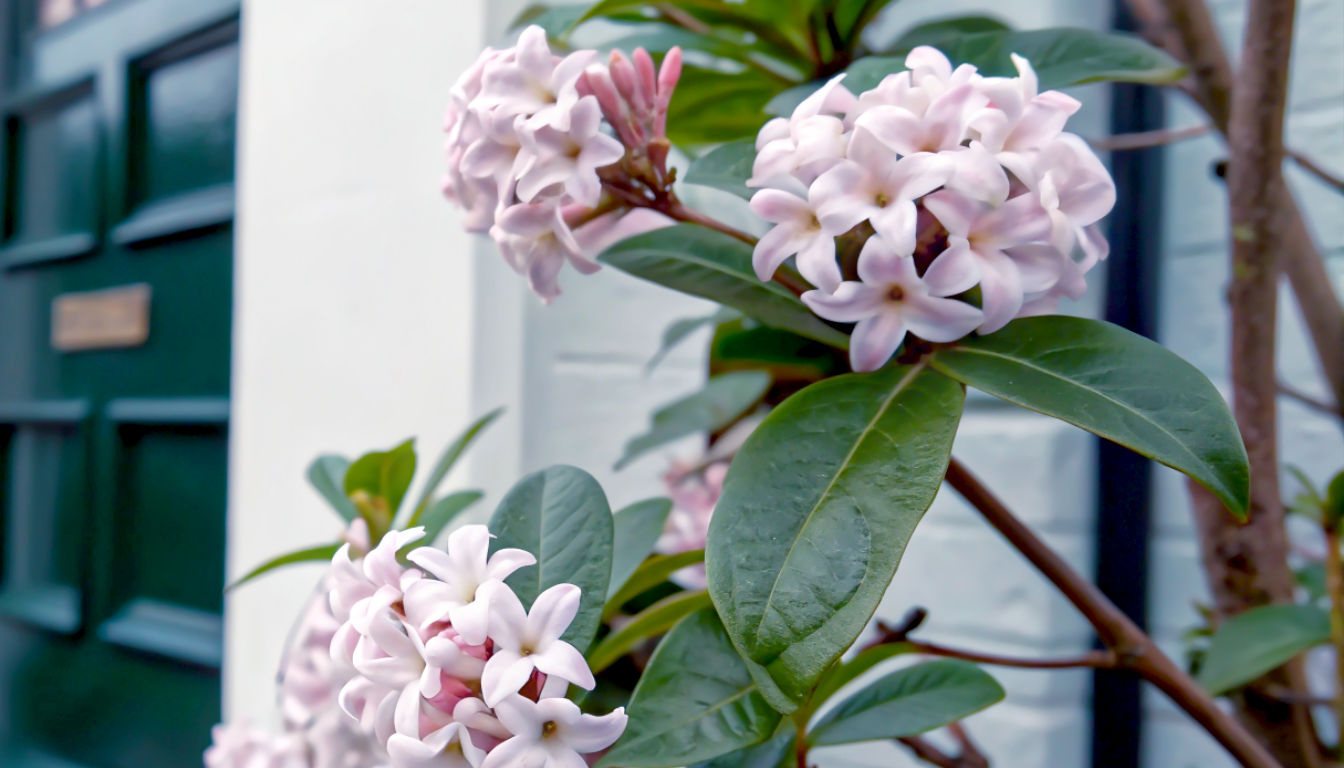
- Why it’s a winter hero: It produces the most beautiful and far-reaching scent of any winter-flowering shrub, filling the garden with perfume on still, cold days.
- Appearance: An upright, semi-evergreen shrub. In mid-winter, its bare stems become covered in clusters of small, pale pink and white waxy flowers.
- Growing Guide:
- Position: They need a sheltered spot in full sun or partial shade to protect them from the worst of the winter weather. Near a doorway or a well-used path is the perfect place to appreciate the scent.
- Soil: They need fertile, moist but very well-drained soil. They don’t like to have their roots disturbed.
- Planting & Care: Daphnes have a reputation for being a bit fussy. The key is to pick your spot carefully and then never move it. They hate root disturbance. Plant in spring or autumn and add some grit to the planting hole to improve drainage. They don’t require any pruning. Be aware that all parts of the plant are poisonous.
- Best for: Planting by the front door, next to a path, or in a sheltered courtyard where the scent can be trapped and enjoyed.
Buy Daphnes Online
7. Camellia (Camellia sasanqua & early C. japonica): Evergreen Elegance
We often think of camellias as spring-flowering shrubs, but there are varieties that will brighten up the garden from autumn right through the winter. Camellia sasanqua varieties are the first to start, often in October, followed by early-flowering Camellia japonica types. They offer large, beautiful, rose-like flowers when you least expect them.
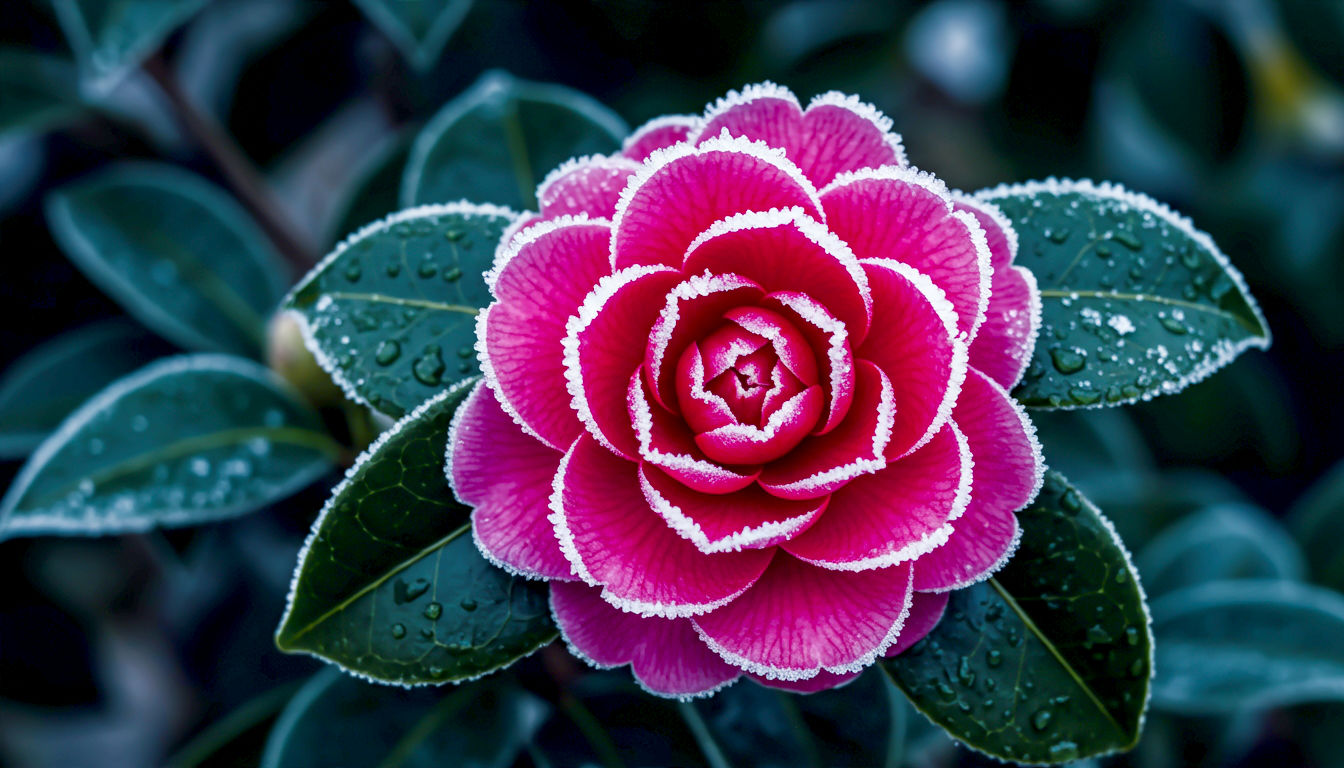
- Why it’s a winter hero: Their glossy, dark green evergreen leaves provide a fantastic backdrop for other plants, and the large, showy flowers are a luxurious treat in the depths of winter.
- Appearance: Handsome shrubs with beautiful foliage. The flowers can be single or double and come in shades of white, pink, and red.
- Growing Guide:
- Position: This is critical. They need a spot in sheltered, partial shade. The early morning sun in winter can scorch and brown the flower buds after a frost, so a position sheltered from the east is ideal.
- Soil: They are ericaceous, which means they must have acidic soil. If your soil is neutral or alkaline, you must grow them in a pot using ericaceous compost.
- Planting & Care: Plant in autumn or spring. Water them with rainwater if you can, especially in hard water areas. Feed them with a special ericaceous fertiliser in spring. They don’t need much pruning, just a light trim to shape after flowering if required.
- Best for: A sheltered, shady border (with the right soil), woodland gardens, and they make magnificent pot specimens for a patio.
Buy Camellias Online
8. Witch Hazel (Hamamelis x intermedia): Fiery Winter Fireworks
Witch Hazels are the eccentrics of the winter garden. They produce the most unusual and beautiful flowers—clusters of thin, crinkly, ribbon-like petals that look like tiny fireworks exploding along the bare branches. They come in fiery shades of yellow, orange, and deep red. As a bonus, most have a wonderful, spicy-sweet fragrance and fantastic autumn leaf colour.
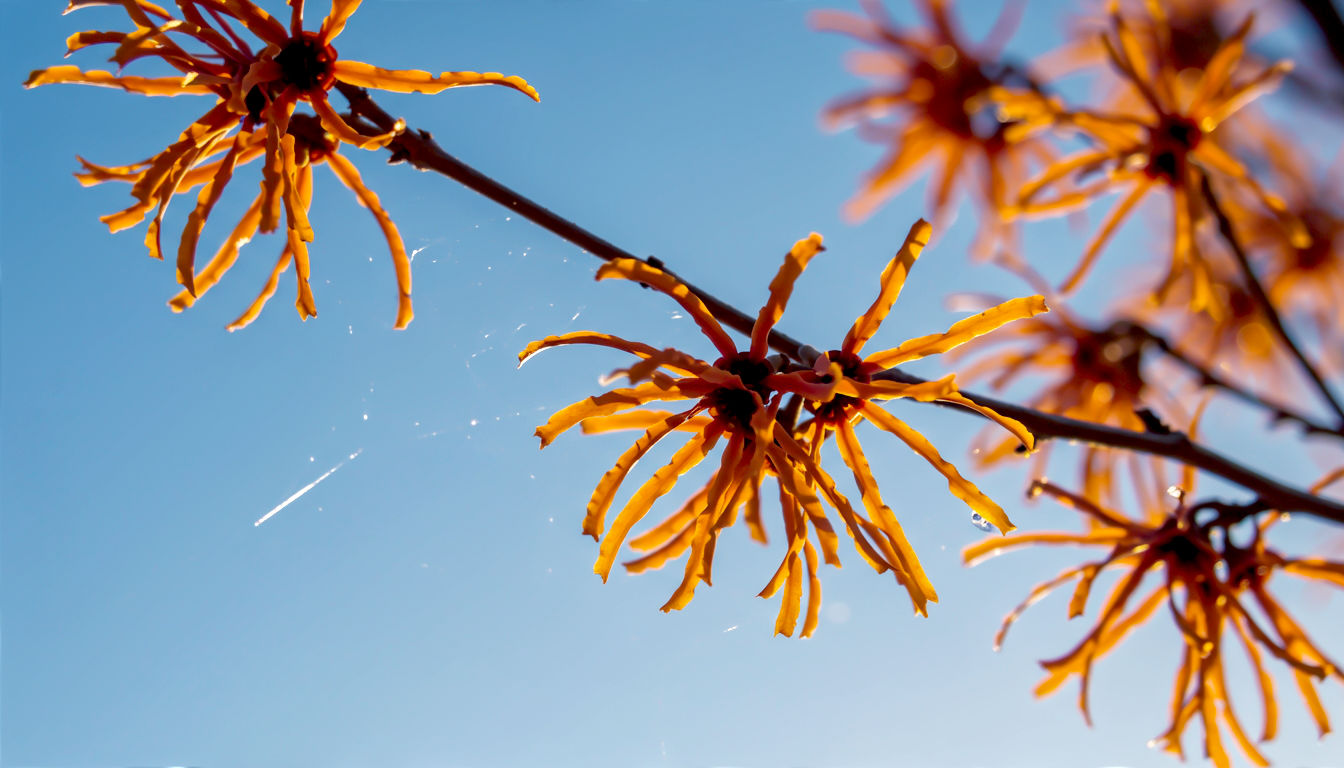
- Why it’s a winter hero: They provide colour, scent, and unique character during the bleakest months. They are slow-growing but will eventually become a stunning small tree.
- Appearance: A large, vase-shaped deciduous shrub or small tree. The spidery flowers appear on bare wood from December to March.
- Growing Guide:
- Position: They flower best in an open, sunny spot.
- Soil: They prefer neutral to slightly acidic soil that is moist but well-drained. They won’t thrive on thin, chalky soil.
- Planting & Care: Plant in autumn or winter. They require very little pruning, which is good because they flower on old wood. Just remove any dead, damaged, or crossing branches after flowering. If you need to restrict their size, you can prune them, but you may sacrifice some of next year’s flowers.
- Best for: A specimen plant in a lawn, at the back of a large border, or anywhere it can be seen from the house.
Buy Witch Hazel Online
9. Winter-Flowering Viburnum (Viburnum x bodnantense ‘Dawn’): Sweetly Scented Clusters
This is one of the most reliable and easy-to-grow winter shrubs. For months on end, from late autumn to early spring, this viburnum produces clusters of small, tubular flowers on its bare branches. The buds are a rich pink, opening to paler pink and fading to white. They also have a gorgeous, sweet, and slightly spicy scent.
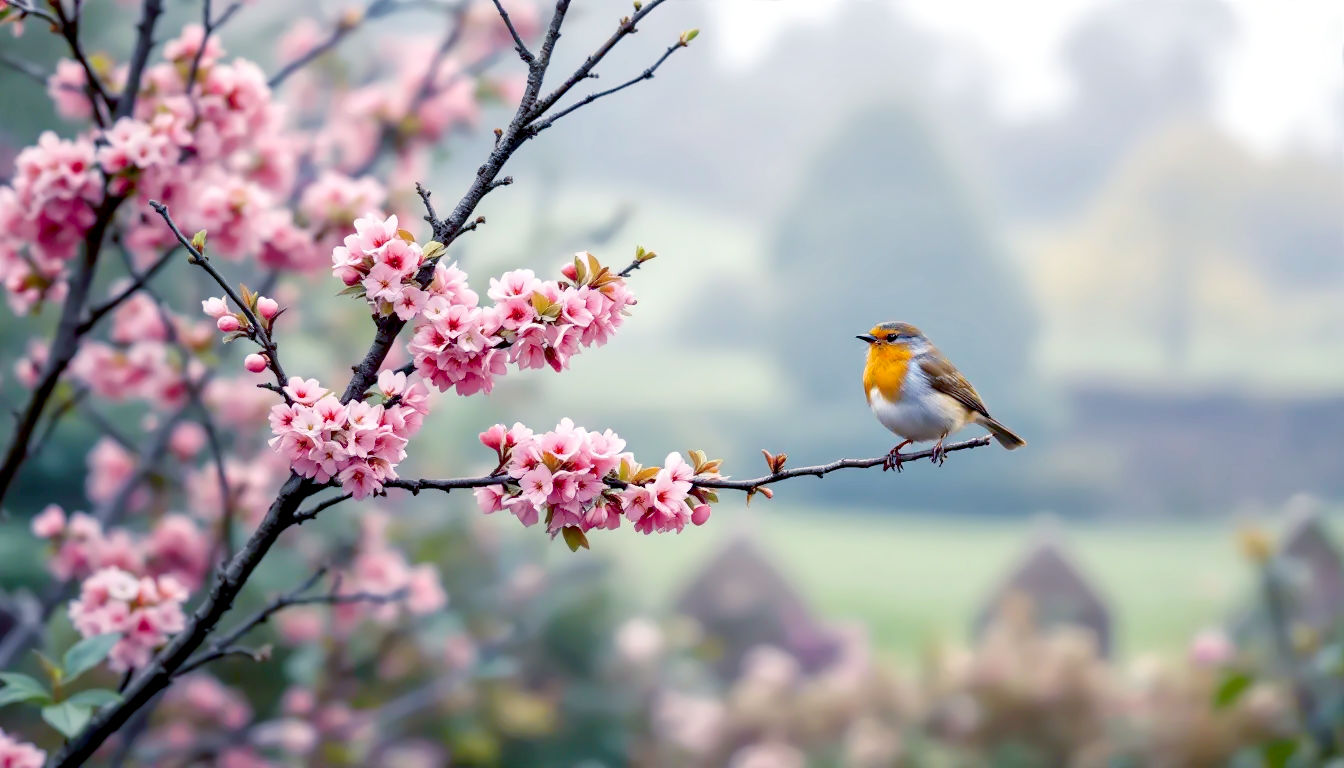
- Why it’s a winter hero: It has one of the longest flowering seasons of any shrub, is tough, reliable, and beautifully scented.
- Appearance: A large, upright, deciduous shrub with dark, twiggy stems. The flowers are small but appear in dense clusters. The new leaves in spring often have a lovely bronze tinge.
- Growing Guide:
- Position: Happy in sun or partial shade.
- Soil: It’s not fussy and will grow in most moderately fertile, well-drained soils.
- Planting & Care: Plant from autumn to spring. It needs very little care. If it gets too large or congested, you can prune it after flowering by cutting back about one-fifth of the oldest stems to the base.
- Best for: The middle or back of a mixed border, a wildlife garden, or planted near a path to catch the scent.
Buy Viburnum Online
10. Winter-Flowering Cherry (Prunus x subhirtella ‘Autumnalis Rosea’): A Delicate Surprise
Just when you think the flowering season is well and truly over, this magical tree begins its show. From November through to March, during any mild spell, its bare branches are studded with delicate, semi-double, pale pink flowers. A hard frost might knock them back, but as soon as the weather warms up, a new flush appears.
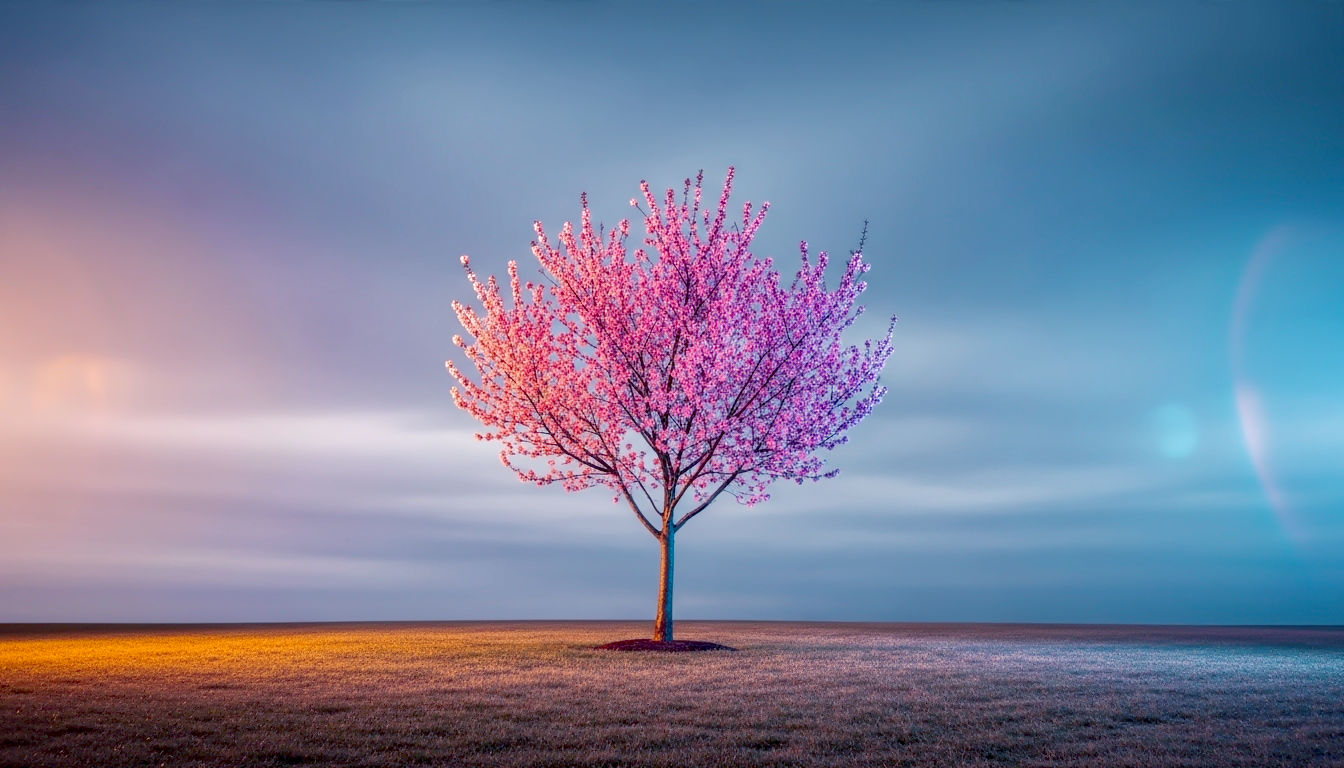
- Why it’s a winter hero: It gives you the beauty of cherry blossom in the depths of winter. It’s a sign of hope and a wonderfully elegant tree for a smaller garden.
- Appearance: A small, spreading deciduous tree. The flowers are small and fragile-looking, appearing intermittently all winter. It also has good autumn colour.
- Growing Guide:
- Position: Needs a spot in full sun to flower well.
- Soil: It will tolerate most soils, including clay and chalk, as long as they are well-drained.
- Planting & Care: Plant from autumn to late winter. Like all cherry trees, it should only be pruned in summer to avoid a fungal disease called silver leaf. It needs very little pruning anyway, just the removal of any dead or crossing branches.
- Best for: A specimen tree in a small garden, in a lawn, or as the star of a winter-themed border.
Buy Winter Flowering Cherry Online
Bringing It All Together: Designing Your Winter Masterpiece
Having a few of these plants is great, but combining them thoughtfully can create a truly stunning winter scene.
Layering for Impact: From Trees to Bulbs
Think about your garden in layers. Use a winter-flowering cherry or a witch hazel as the top layer. Underneath, plant shrubs like mahonia and viburnum. For the ground layer, create carpets of snowdrops and winter aconites, with clumps of hellebores for elegant focal points. This creates a rich, three-dimensional picture.
The Power of Scent: Planting Near Paths and Doorways
Scent is more powerful in the still, cold air of winter. Make sure you plant your most fragrant heroes—Daphne, Viburnum, Mahonia, Witch Hazel—where you will walk past them regularly. By the front door, along the path to the bins, or under a living room window are all perfect spots.
Winter Colour Palettes: Beyond the Flowers
The flowers are the stars, but don’t forget the supporting cast. The fiery stems of Dogwood (Cornus), the twisted branches of Harry Lauder’s Walking Stick (Corylus avellana ‘Contorta’), and the glossy leaves and bright berries of Holly (Ilex) all provide crucial colour and structure. Combine them with your flowering plants for a garden that is interesting from top to bottom.
Don’t Forget the Pots: Winter Containers for Every Space
You don’t need a big garden to enjoy winter colour. A large pot by the front door can become a miniature winter garden. Try planting a central, scented shrub like a small Daphne or Skimmia, underplant with hellebores, and edge with trailing ivy. You can even pop in some snowdrop bulbs for an early surprise.
A Haven for Wildlife: Your Garden’s Winter Role
A winter garden isn’t just for you. On a mild, sunny winter day, queen bumblebees that have been disturbed from hibernation are desperate for food. The nectar-rich flowers of mahonia, viburnum, and hellebores are a crucial lifeline for them and other early pollinators. The shrubs provide shelter for small birds, and any berries are a welcome feast. By planting for winter, you are playing a vital role in supporting your local ecosystem.
Conclusion: Your Garden for All Seasons
Your garden doesn’t need to shut down for a third of the year. By choosing the right plants, you can create a space that is full of life, colour, and scent, even on the coldest, darkest days. It’s a place that can lift your spirits, connect you with the quiet rhythm of the seasons, and remind you that even in the depths of winter, new life is just around the corner. So this autumn, don’t just tidy up and retreat indoors. Plan, plant, and prepare to fall in love with a whole new side of your garden.
Further Reading
- Royal Horticultural Society (RHS): Winter gardening inspiration and advice
- BBC Gardeners’ World: Plants for winter colour
- Crocus: Winter-flowering plants for sale and inspiration


